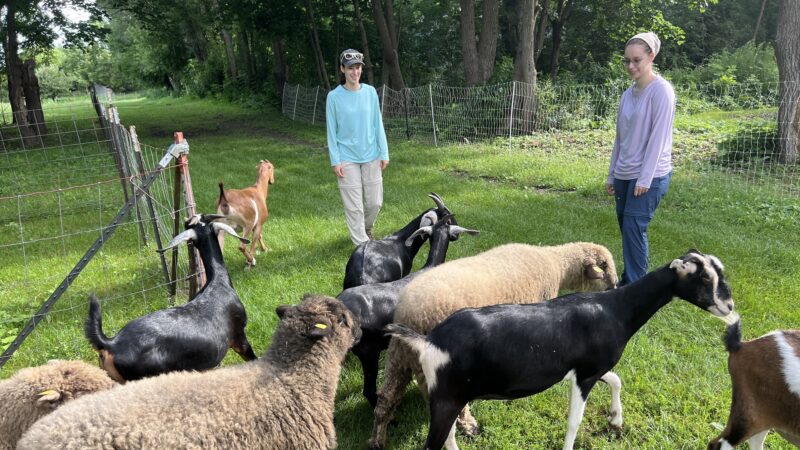
When Jeff mapped our farm, he designated nearly one-third of our land as “natural areas”—including woodlands, hedgerows, and native habitats — that support wildlife throughout the property. While these spaces are crucial for biodiversity, they still require thoughtful management to remain healthy and productive.
This season, we’re piloting an exciting new approach: conservation grazing with our animal educators.
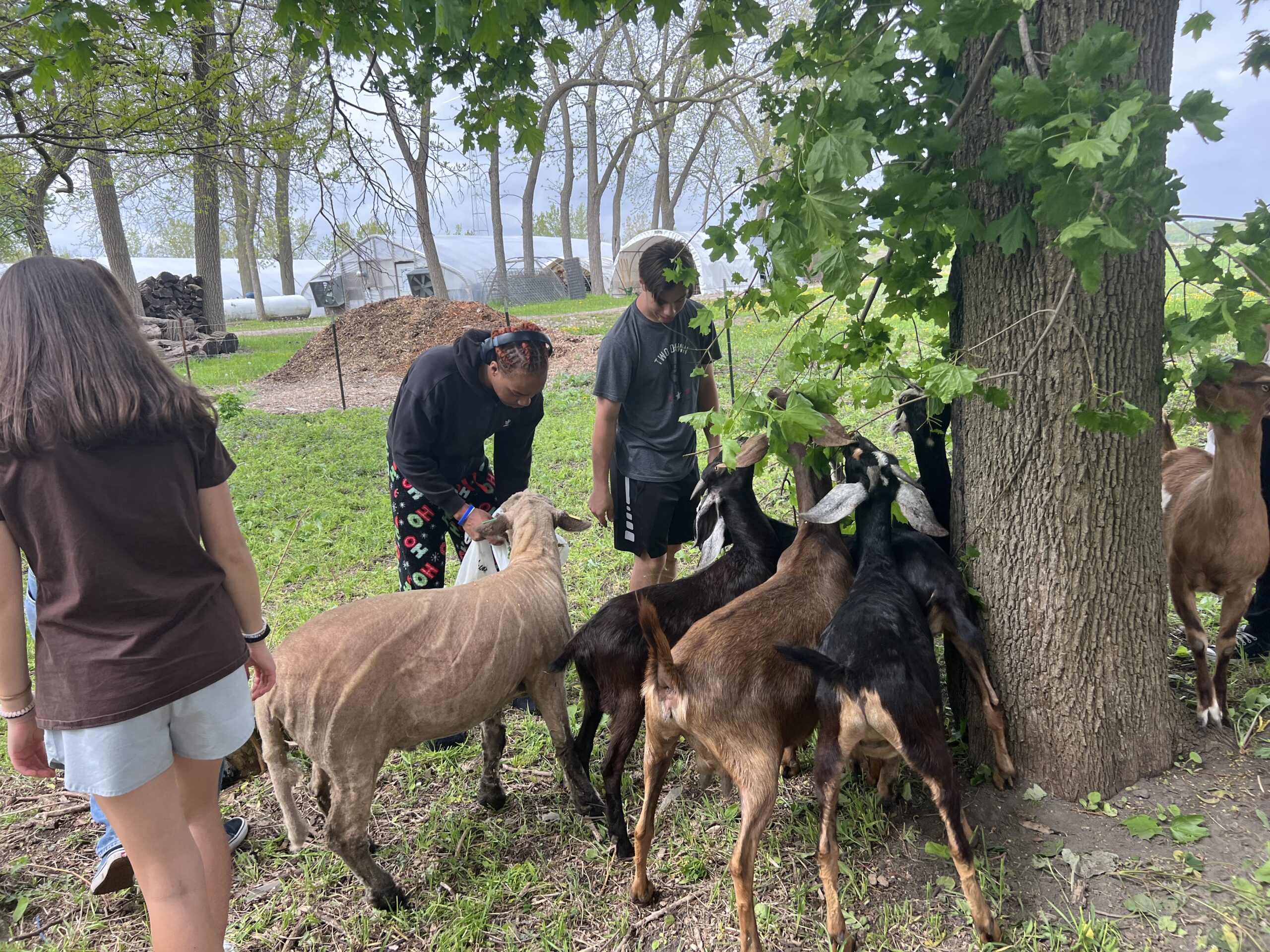
The idea grew from watching our livestock successfully manage their silvopastures through rotational grazing. Their natural browsing behaviors could also benefit our conservation areas. So, the first step was training our goats and sheep to respect electric fencing boundaries within their existing pastures—a process that took patience but proved essential for safe, controlled grazing.
Once they understood these boundaries, our farm crew was ready to set up their first conservation assignment.
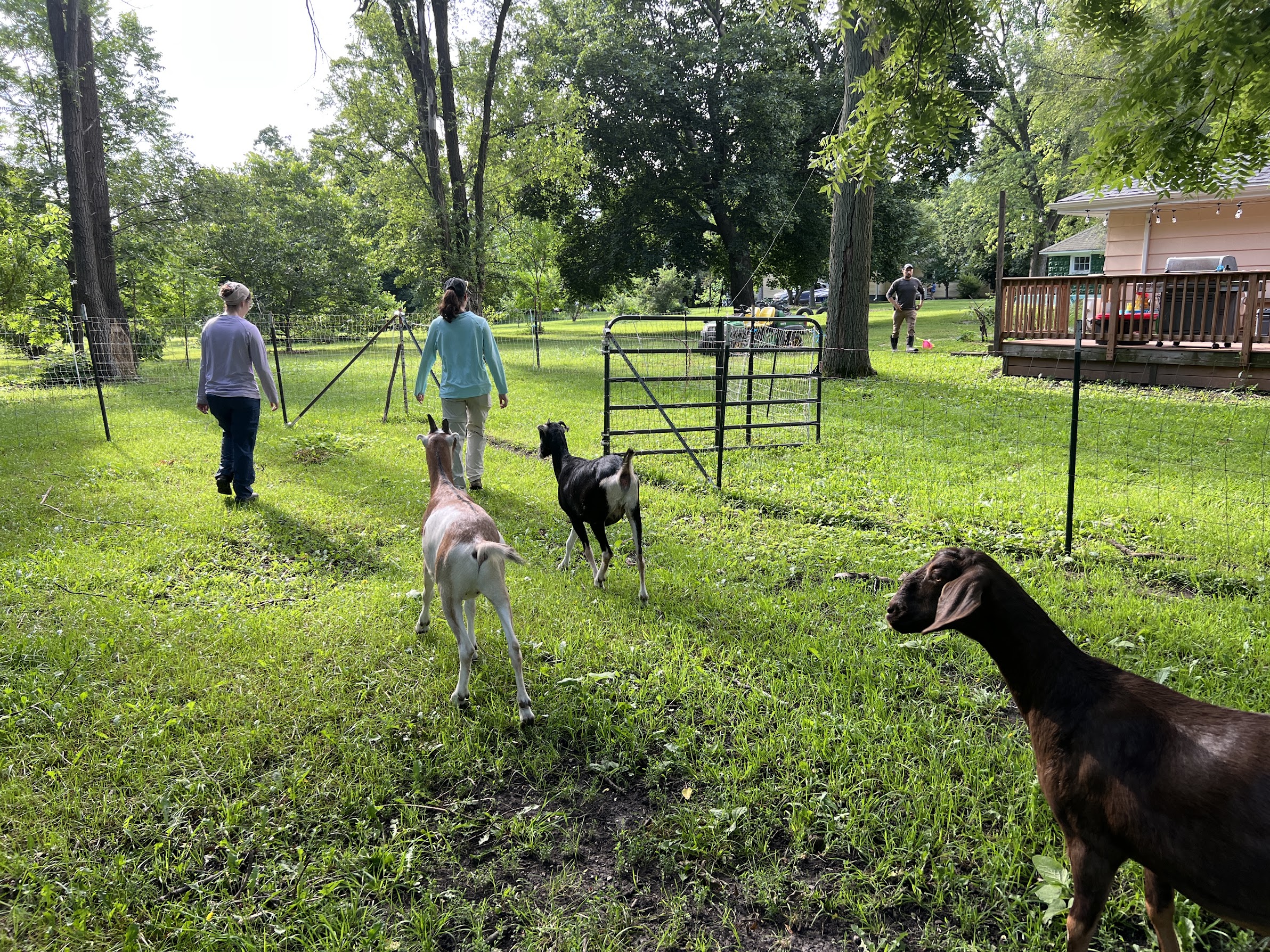
Jeff’s interns led our curious goats and sheep through a normally-closed gate separating the blue schoolhouse from the main pasture. When they opened that gate, the delicious work began! The goats immediately reached up into the higher brush while the sheep explored the understory vegetation. Working together, they made great progress clearing invasive plants in just one afternoon.
Now we’re giving the animals daily access to this wooded area while maintaining a separate section nearby as our “control plot.” This allows us to document the before-and-after effects of their work and compare areas with and without grazing pressure.
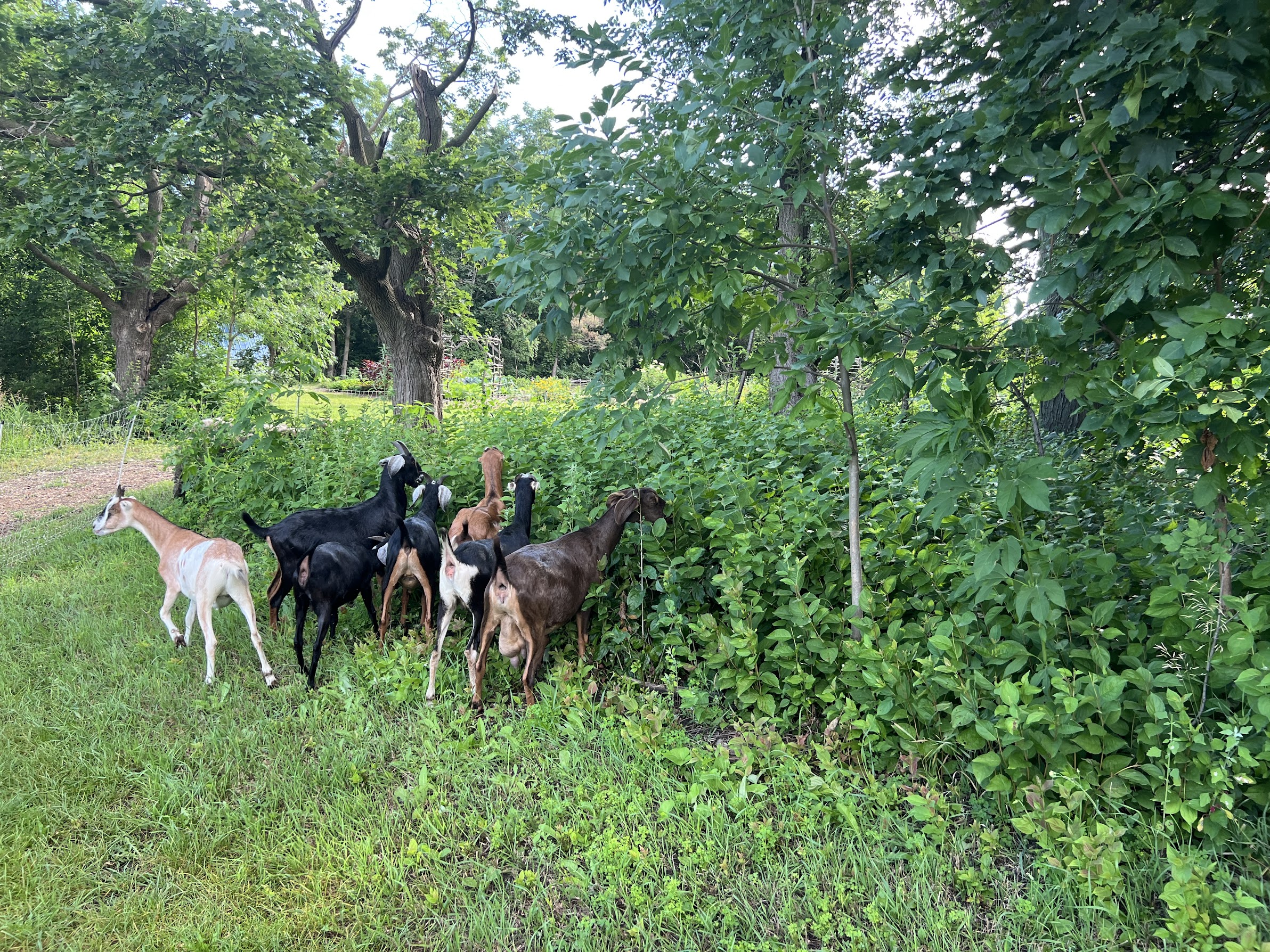
Traditional invasive species management often relies on mechanical clearing or herbicide applications. While effective, these approaches can be expensive and sometimes disrupt beneficial native plants growing alongside invasives. Our goats and sheep, however, seem to naturally prefer many invasive species over natives. This selective eating reduces our need for precise plant identification and careful herbicide application, while the animals’ manure adds organic matter back to the soil rather than introducing chemicals.
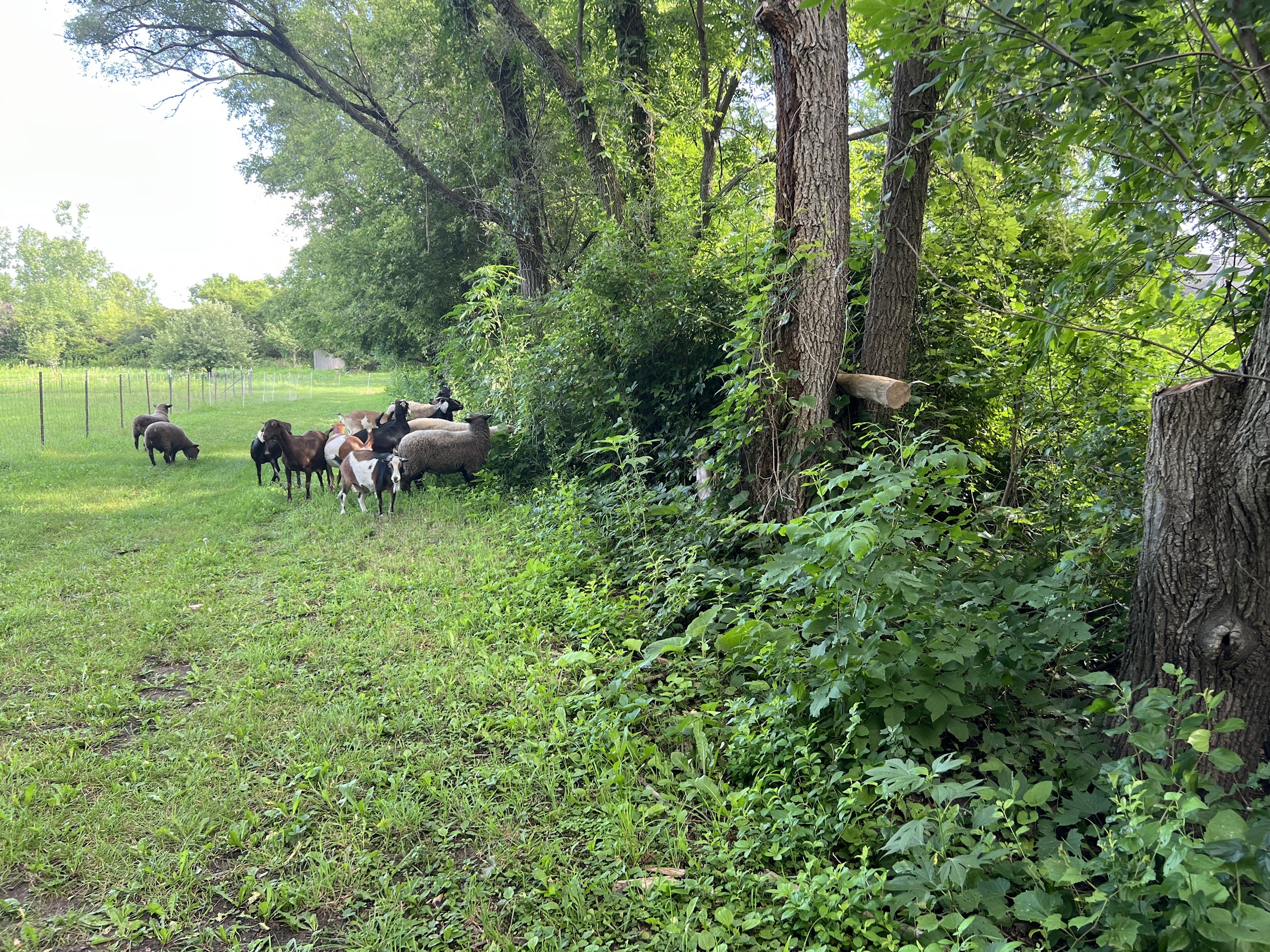
Our interns are observing which plants the animals prefer, how much vegetation they consume, and how their hoofprints affect soil compaction and seed dispersal. These observations will guide our decisions about which conservation areas to focus on next and help us refine our grazing management techniques.
We’re excited to share our findings as this important—and admittedly adorable—land management partnership continues to evolve.
Your farmers,
~ Jeff, Jen, David, Cleto, Anacleto, Miguel, Saul, Pari, Larkin and the four-legged farm team
